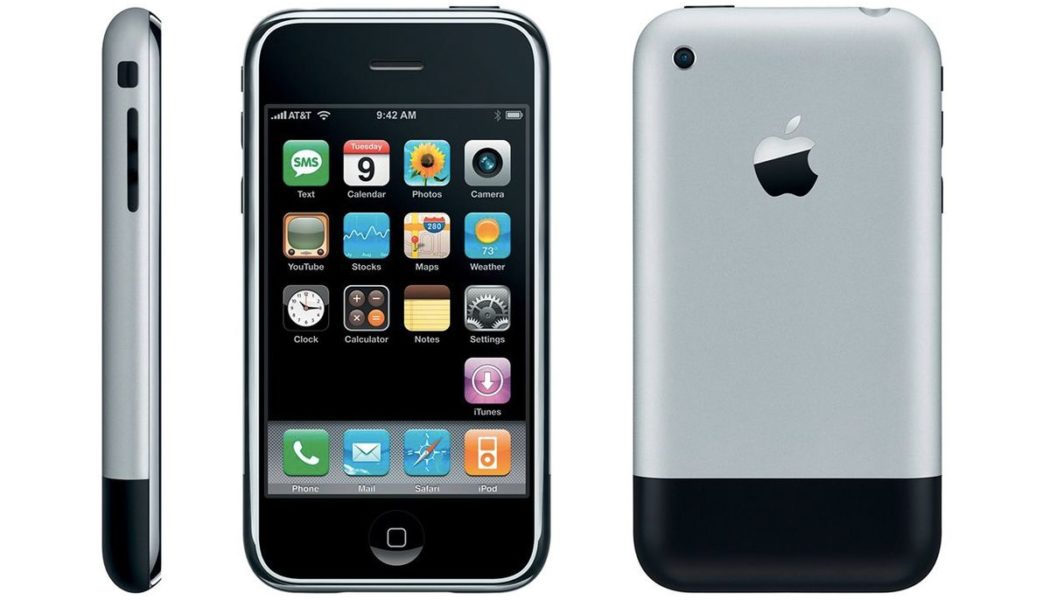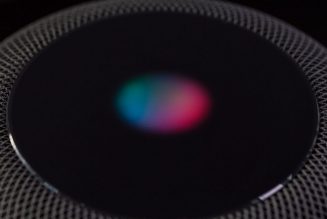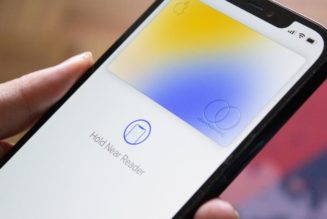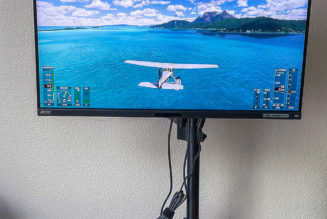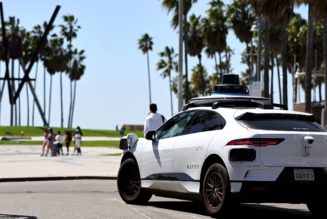Fifteen years ago, Steve Jobs introduced the very first iPhone. He described it as three devices in one: a “widescreen iPod with touch controls, a revolutionary mobile phone, and a breakthrough internet communications device.”
But since its first unveiling, the iPhone has become much more than that. It’s a symbol of the tech industry, of the modern era as a whole, and has made Apple the largest company in the world in terms of market capitalization. In 2015, it was speculated to be the most profitable product ever and helped grow Apple’s market cap to not just $1 trillion or $2 trillion — but as high as $3 trillion.
One reason for that is the steady pace of progress Apple has made to keep the iPhone at the top of the fray. It started with a compact device that focused on user interface and software, then upgraded network speeds and processor specs. Later, it added incrementally better cameras, followed the market to add bigger screens, and kept introducing new software and security features.
A decade and a half on, the iPhone is still making headlines. Let’s take a look at how the iPhone has changed over the years:
iPhone (2007)
:no_upscale()/cdn.vox-cdn.com/uploads/chorus_asset/file/7774999/1_iphone_2007.0.jpg)
This is the iPhone as it first appeared in 2007, laying the foundation for the modern smartphone. It introduced the classic grid of icons, the single home button, and dropped a physical keyboard — a standard for smartphones at the time — in favor of a multitouch display. It was ready for the internet and consuming media, but it still lacked a number of key features, including 3G connectivity and the App Store.
iPhone 3G (2008)
:no_upscale()/cdn.vox-cdn.com/uploads/chorus_asset/file/7774993/2_iphone_3g_2008.0.jpg)
The next iPhone launched in 2008 with that missing piece of the puzzle: the App Store. This gave developers the chance to build their own applications and increased the iPhone’s value as useful apps and games populated its digital shopfront. The iPhone 3G also had 3G data as well as push email and GPS navigation.
iPhone 3GS (2009)
:no_upscale()/cdn.vox-cdn.com/uploads/chorus_asset/file/7774997/3_iphone_3gs_2009.0.jpg)
The first “S” model iPhone offered iterative improvements rather than big new features. Apple said it was twice as fast as its predecessor, with the “S” standing for speed. It retained the same basic shape as earlier models, including a 3.5-inch, 480 x 320 display. Oh, and users finally got the option to copy and paste text.
iPhone 4 (2010)
:no_upscale()/cdn.vox-cdn.com/uploads/chorus_asset/file/7774991/4_iphone_4_2010.0.jpg)
The first major redesign of the iPhone bought stainless steel and glass to the table as well as a new squarer look with rounded corners. It was unveiled as the thinnest smartphone in the world and was the first Apple device to use a “Retina display.” It was also the first iPhone with a front-facing camera for making FaceTime video calls, and it shipped with iOS 4, which was capable of multitasking apps.
:no_upscale()/cdn.vox-cdn.com/assets/938847/iPhone_4S_Siri_1020.jpg)
The fifth-generation iPhone looked identical to its predecessor but shipped with Siri — Apple’s voice assistant, which was ahead of its time but a little too ambitious. The phone also came with a new, rear-facing 8-megapixel camera and redesigned antenna to fix connectivity problems that plagued the iPhone 4. It was unveiled on October 4th; Apple founder Steve Jobs died the following day. Verge score: 8.6 out of 10.
:no_upscale()/cdn.vox-cdn.com/uploads/chorus_asset/file/2651610/LL6C9555-hero.1348200901.jpg)
The second major redesign of the iPhone had its screen grow to four inches, following the smartphone market that was trending toward larger devices. It was still compact and easy to handle with one hand and was built with an aluminum chassis that lightened the device but remained durable. The iPhone 5 also introduced the reversible Lightning connector, replacing the old 30-pin port. Verge score: 8.8 out of 10.
:no_upscale()/cdn.vox-cdn.com/uploads/chorus_asset/file/13062703/IMG_3022-1024.1419979922.jpg)
The iPhone 5S retained the 5’s design but replaced the home button with Touch ID, Apple’s fingerprint scanner, which was influential enough to make fingerprint scanners a standard feature across the smartphone industry. The device featured the first 64-bit processor in a smartphone with the A7 chip. It also shipped with iOS 7, a major overhaul of Apple’s mobile operating system that dropped various skeuomorphic design touches (like fake textures in apps) for a flatter, cleaner look. Verge score: 8.8 out of 10.
:no_upscale()/cdn.vox-cdn.com/uploads/chorus_asset/file/14483368/IMG_2841-1024.1419979977.jpg)
2013 marked the first time Apple announced two iPhones in one day. The cheaper of the two was the colorful iPhone 5C, which had similar specs to the prior year’s iPhone 5 but came with a polycarbonate shell that was famously described by designer Jony Ive as “unapologetically plastic.” At $549, investors were worried that the price wasn’t low enough to compete with lower-cost Android devices, and the phone was seen as a relative failure compared to the iPhone 5S. Verge score: 8.5 out of 10.
:no_upscale()/cdn.vox-cdn.com/uploads/chorus_asset/file/797122/DSCF1788-2040.0.jpg)
In 2014, Apple finally went big with the iPhone, introducing the 4.7-inch iPhone 6 and the 5.5-inch iPhone 6 Plus. Both phones featured a new design with curved edges, introduced NFC support for mobile payments, and included improved cameras — which had become the iPhone’s standout feature. The larger, lighter phones weren’t as sturdy as previous models, though, and “Bendgate” was the Apple scandal of 2014. Verge score: 9 out of 10 (iPhone 6), 8.7 out of 10 (iPhone 6 Plus).
:no_upscale()/cdn.vox-cdn.com/uploads/chorus_asset/file/4084002/iphone-6s-plus-2-20.0.jpg)
Another S year meant another Similar-looking iPhone. The glass was tougher, and the aluminum case was less prone to bending on the iPhone 6S and 6S Plus, but not much else had changed. The 6S phones added a pressure-sensitive display called 3D Touch that allowed you to quickly access menus and previews by pushing into the screen until it “popped” with haptic feedback. It was a clever feature but had some learning complexity, and Apple would drop the feature from other iPhones four years later. Verge score: 9 out of 10.
:no_upscale()/cdn.vox-cdn.com/uploads/chorus_asset/file/6243521/iphone-se-review-jbareham-verge-15.0.jpg)
The beginning of 2016 brought a surprise: the midcycle iPhone SE — a $399 device that looked exactly like the two-and-a-half-year-old iPhone 5S but with speedy new hardware inside. It was the company’s first real attempt to add an affordable entry iPhone option after the not-so-inexpensive iPhone 5C. The four-inch screen was perfect for people who didn’t quite feel ready to move on to a larger device, but it was clear Apple thought big iPhones were the future. Verge score: 8.7 out of 10.
:no_upscale()/cdn.vox-cdn.com/uploads/chorus_asset/file/7089179/jbareham_160909_1215_A_0023_compressed.0.jpg)
The iPhone 7 and 7 Plus refined what the iPhone 6S offered by adding better cameras and water resistance — but avoided a complete redesign. The plus model included a new dual-camera system that added 2x zoom and a Portrait Mode that enabled a virtual shallow depth-of-field on subjects. Both models dropped the mechanical home button in favor of a fully digital lookalike, and, yes, the headphone jack was removed. Apple called it “courage,” while critics called it arrogance. Either way, there was no going back. Verge score: 9 out of 10.
:no_upscale()/cdn.vox-cdn.com/uploads/chorus_asset/file/9275823/jbareham_170916_2000_0028.jpg)
The iPhone 8 and 8 Plus weren’t Apple’s revolutionary new takes to mark 10 years of iPhone. Instead, they were refreshes of the company’s hugely successful 4.7-inch and 5.5-inch form factors that began with the iPhone 6. Both the iPhone 8 and 8 Plus could easily have been an S update of the iPhone 7 models — with just improved cameras and processors and an all-glass rear to accommodate new wireless charging coils. All that’s fine, though, because these models released under the shadow of the iPhone that’s actually fit to represent 10 years of iPhone. Verge score: 8 out of 10.
:no_upscale()/cdn.vox-cdn.com/uploads/chorus_asset/file/9881573/jbareham_171031_2099_A_0265.jpg)
The iPhone X (that’s 10, folks) broke the visual mold of every iPhone before it by shedding the physical home button and adding an edge-to-edge OLED display to an all-new stainless steel chassis. It was the first to include Face ID biometrics instead of a fingerprint reader and introduced silly Animoji characters for iMessage that can mirror your facial expressions. It didn’t come cheap: the iPhone X started at $999 — an unfortunately successful market test that forever inflated premium smartphone prices. Verge Score: 9 out of 10
:no_upscale()/cdn.vox-cdn.com/uploads/chorus_asset/file/13104537/jbareham_180916_2948_0061.jpg)
The iPhone XS looked similar to the previous year’s iPhone X with minor improvements, but this time, Apple made a plus-sized “Max” version with a huge 6.5-inch display. Apple was once slow to build larger iPhones, but with the iPhone XS Max, it eagerly embraced them. This became the era where Apple associated bigger screens with top-of-the-line features. All that was missing was the “Pro” moniker. Verge Score: 8.5 out of 10
:no_upscale()/cdn.vox-cdn.com/uploads/chorus_asset/file/13315987/akrales_181019_3014_0307.jpg)
While the iPhone X released alongside the legacy-style iPhone 8, the XS didn’t get an iPhone 9 as a running mate. Instead, Apple introduced the iPhone XR. This lower-end model traded the premium stainless steel chassis of the XS for colorful aluminum, dropped the telephoto camera and 3D Touch, and downgraded the screen to LCD instead of OLED. But the iPhone XR still gave users a big screen, Face ID, the latest processor, and excellent battery life. At a reasonable $749 starting price, the iPhone XR was excellent value for the money. Verge Score: 8 out of 10
:no_upscale()/cdn.vox-cdn.com/uploads/chorus_asset/file/19206341/akrales_190913_3628_0327.jpg)
The iPhone 11 borrowed the iPhone XR’s form factor, but this time, Apple made it the year’s main-line device. Apple added a new ultrawide camera that let you fit more in a photo scene, and it offered multiple colors like with the XR. The cost of entry dropped to $699, too, though it still came with a small 64GB of storage. Verge Score: 9 out of 10
:no_upscale()/cdn.vox-cdn.com/uploads/chorus_asset/file/19206379/akrales_190913_3666_0369.jpg)
The iPhone went Pro for the first time with the iPhone 11 Pro and Pro Max in 2019. These iPhones were the spiritual successors of the iPhone XS and XS Max, but instead of just two cameras, they added a third one for ultrawide shots. The 11 Pros came with an 18W fast charger and a USB-C to Lightning cable out of the box. The rear of the iPhone 11 Pro model is glass, but instead of a glossy finish, it was matte — and it came in a striking midnight green color. Verge Score: 9 out of 10
:no_upscale()/cdn.vox-cdn.com/uploads/chorus_asset/file/19916237/vpavic_042020_3980_0040.jpg)
You’d be forgiven if you mistook this second-generation iPhone SE for an iPhone 8. They’re essentially the same size and shape, but the updated iPhone SE benefitted from better performance and a slightly better camera that included portrait mode. The first iPhone SE from 2016 had a cult following for its small size, but the second-generation SE instead switched to the larger 4.7-inch size of more recent iPhones. What the new SE did mirror from its predecessor was the inclusion of modern specs at a cheap price — starting at $399. Verge Score: 8.5 out of 10
:no_upscale()/cdn.vox-cdn.com/uploads/chorus_asset/file/22023082/vpavic_4279_20201107_0180.0.jpg)
iPhone 12 brought back the flat-edged, glass sandwich design that Apple first used on the iPhone 4 in 2010. The 12 had a wide and ultrawide camera like the iPhone 11, but it traded in the LCD for an OLED screen. And small phone enthusiasts rejoiced as Apple revealed a shrunken version: the iPhone 12 mini. iPhone 12 introduced 5G cellular radios and Apple’s MagSafe charging that lets you mount your phone and charge wirelessly at potentially faster speeds than standard wireless chargers. Verge Score: 9 out of 10
:no_upscale()/cdn.vox-cdn.com/uploads/chorus_asset/file/21973377/akrales_201018_4238_0216.0.jpg)
iPhone 12 Pro offered some extra features with snazzier trimmings compared to the similarly designed iPhone 12. You get a stainless steel frame, a matte glass finish on the back, and a telephoto camera, on top of the upgrade to 5G. In true for-the-pros fashion, the iPhone 12 Pro has a lidar scanner for 3D mapping applications and for assisting with portrait mode. The phone can also shoot photos in ProRes RAW format. And Apple made its largest screened iPhone yet with the iPhone 12 Pro Max’s huge 6.7-inch screen. Verge Score: 9 out of 10
:no_upscale()/cdn.vox-cdn.com/uploads/chorus_asset/file/22863273/vpavic_210916_4760_0240.jpg)
iPhone 13 could easily have been an “S” year phone, resembling the 12 in most ways. The cameras got upgraded with similar sensors to those in the previous year’s iPhone 12 Pro (but still had only two cameras), and the lenses got rearranged in a diagonal alignment instead of a vertical one. Apple did give both of the 13 models a noticeable boosts in battery life compared to the 12, and Apple finally stopped shipping its flagships with 64GB of storage by making 128GB the new entry size. Verge Score: 9 out of 10
:no_upscale()/cdn.vox-cdn.com/uploads/chorus_asset/file/22863288/vpavic_210916_untitled_0058.jpg)
At first glance, the iPhone 13 Pro looks just like the 12 Pro, but next to each other, you can see the camera lenses have grown — hinting at the array of camera updates in these models. The 13 Pro came with 3x optical zoom, support for macro photography, and better low-light performance on the wide and ultrawide cameras. Video was better than ever, with an option for shooting ProRes footage, and a new Cinematic Mode created an impression of depth-of-field between subjects while shooting. With the iPhone 13 Pro series, Apple finally added ProMotion high refresh rate screens that had become a standard on most flagship Android devices. Verge Score: 9 out of 10
:no_upscale()/cdn.vox-cdn.com/uploads/chorus_asset/file/23307882/ajohnson_221103_5070_0002.jpg)
The third-generation iPhone SE is almost a carbon copy of the 2020 model, but it received the latest processor and got a new 5G cellular radio. Those upgrades couldn’t keep the original price point, though, as the phone’s cost of entry raised to $429 — still for just 64GB of storage. Verge Score: 8 out of 10
Apple announced its “Far out” event for September 7th, where it’s expected to reveal the new iPhone 14 lineup. Rumors suggest the company will introduce a Max-sized iPhone 14, making the new projected lineup: iPhone 14, 14 Max, 14 Pro, and 14 Pro Max.
This time around, the non-pro models might retain last year’s A15 Bionic chipset, with the Pro differentiator being a new A16 chipset. We may even see the notch get nicked in favor of smaller camera and Face ID cutouts. And unfortunately for some, the iPhone mini may not make a return.
